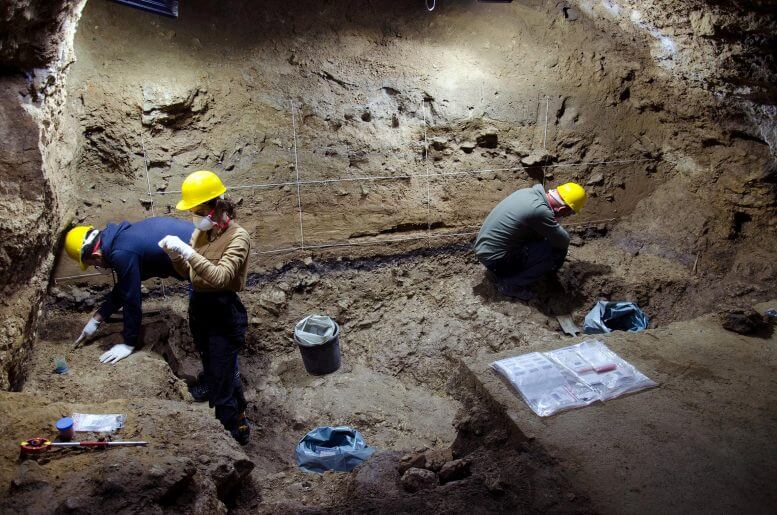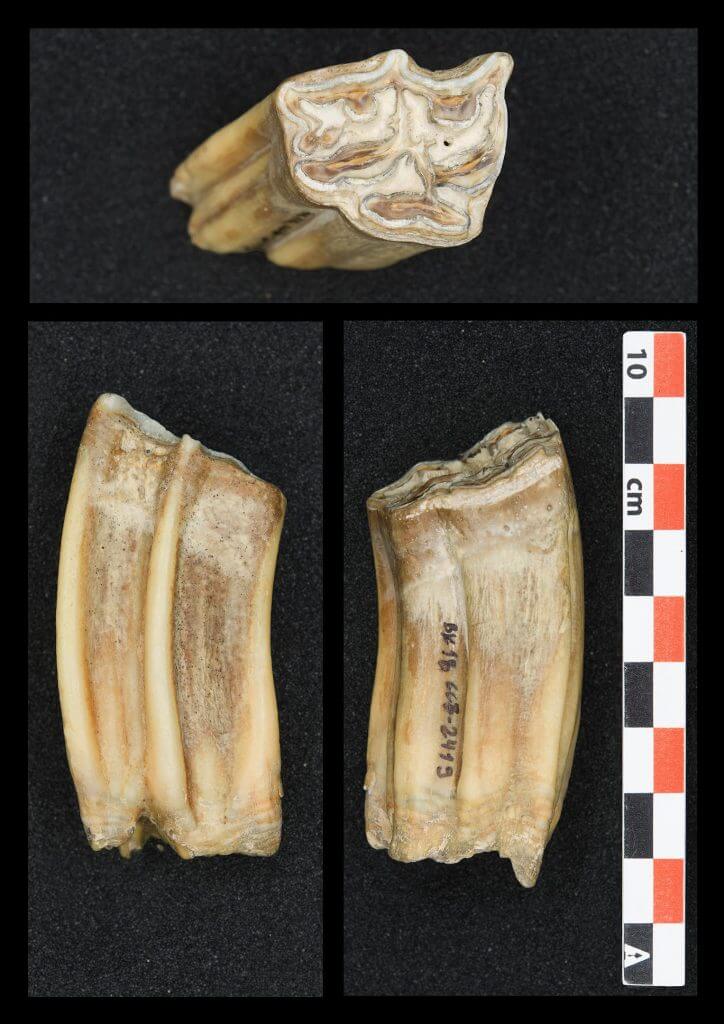New insights into the climatic background of an early dispersal wave of our species into Europe during the last Ice Age.

The current excavations in the Bechu Kiru cave in the 2021 season are revealing new objects from the Middle Paleolithic Neanderthal occupation. You can see the main Upper Paleolithic layer 1 as a dark band in the sediment profile. The diggers use masks and gloves to minimize contamination of the samples that are regularly taken for molecular analysis.
The process by which our species spread into new environments during that time is an important evolutionary turning point that eventually led to Homo sapiens inhabiting all continents and a great variety of regions and climates. The mechanisms that enabled initial waves of expansion are still debated, but most models based on the correlation between archaeological sites and spatially distant climatic records have so far suggested that groups of humans relied on warmer climatic conditions to spread to new, more northern environments.

In high-crowned horse teeth – such as the one shown here, which was extracted from the lower layers of the Bechu Kiro Cave sequence – the oxygen isotopic composition of the tooth's vitreous was examined to reconstruct the seasonal temperatures during the animal's life.
Using direct evidence from the archaeological layers of the Bechu Kiru cave, the team from the Max Planck Institute has now been able to show that humans endured very cold climatic conditions, similar to those typical of today's northern Scandinavia, for several thousand years. "Our evidence shows that the people in these groups were more flexible about the environments they used, and adapted to different climatic conditions than we previously thought," said lead author Sarah Padzani, a researcher at the Max Planck Institute for Evolutionary Anthropology and the University of Aberdeen. Jean-Jacques Aublanc, Director of the Department of Human Development at the Max Planck Institute, adds: "Using these new insights, it will now be necessary to build new models of the spread of our species across Eurasia, which take into account the much greater degree of climatic flexibility they had." .
By directly using archaeological material, such as the remains of herbivores butchered by humans, to create climate data the Paleolithic Climate Research team—led by Pedjani and Kate Britton, also a researcher at the Max Planck Institute for Evolutionary Anthropology and the University of Aberdeen—was able to create a very robust record of Local climatic conditions that refer specifically to the periods when humans lived in Cave B'Tso Kiro.
More of the topic in Hayadan:
- The Weizmann Institute of Science and the German "Max Planck Society" are establishing a joint research center for archeology and anthropology
- The man from Nesher Ramla lived for a long time alongside Homo sapiens * the link that connected us to the Neanderthals
- Special to the Science site: Did Neanderthal man and Homo sapiens unite in Israel?
- Out of Africa: In the wake of modern man and the Neanderthals he met
